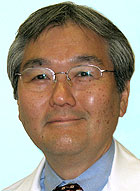Half of the immune system has a hidden talent, School of Medicine researchers have discovered.

Yokoyama
They found the innate immune system, long recognized as a specialist in rapidly and aggressively combating invaders, has cells that can learn from experience and fight better when called into battle a second time. Scientists previously thought any such ability was limited to the immune system’s other major branch, the adaptive immune system.
The finding, published online in the Proceedings of the National Academy of Sciences, will help scientists better understand the immune system and seek new ways to modulate its responsiveness. Low immune responsiveness, like that found in some genetic disorders and conditions such as AIDS, can leave the body dangerously vulnerable to infection, but too much can put it at risk of autoimmune conditions such as rheumatoid arthritis.
Vaccines take advantage of a property researchers call “immune memory,” which is found in adaptive immune cells that can learn to recognize a particular invader and more quickly and forcefully attack the invader if it returns. By exposing the immune system to a weakened or dead version of a pathogen such as measles, a vaccine stimulates the body so that it can much more effectively respond to naturally occurring infections of the same or similar agents.
The new ability scientists identified has a similar result — cells that can fight back more effectively after an initial stimulation — but the cells are not adaptive immune cells. They are the innate immune system’s natural killer cells, which can switch between an active infection-fighting state and a dormant, resting state.
“We’re calling this new property ‘memory-like,'” said senior author Wayne M. Yokoyama, M.D., the Sam J. and Audrey Loew Levin Professor of Medicine, professor of pathology and immunology and a Howard Hughes Medical Institute investigator. “Natural killer cells can’t specialize in recognition of a particular pathogen, but we found that once they’ve been activated, they can respond more easily and effectively to the next call for activation.”